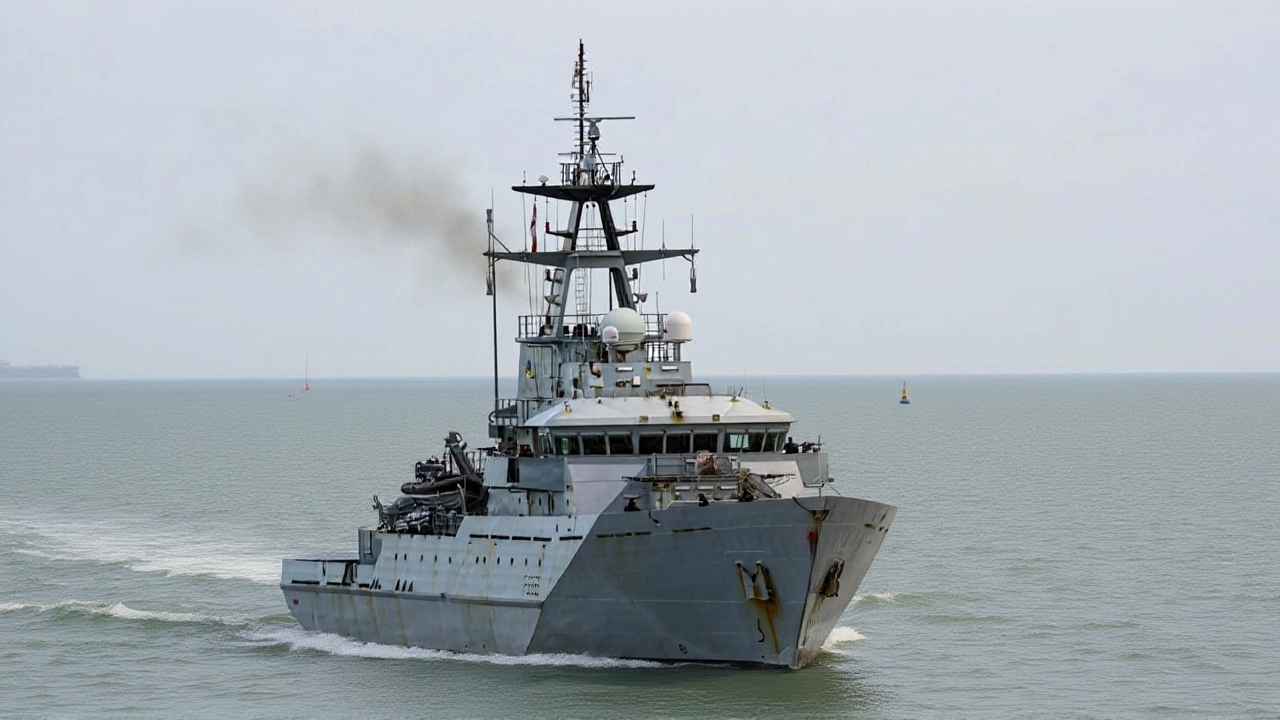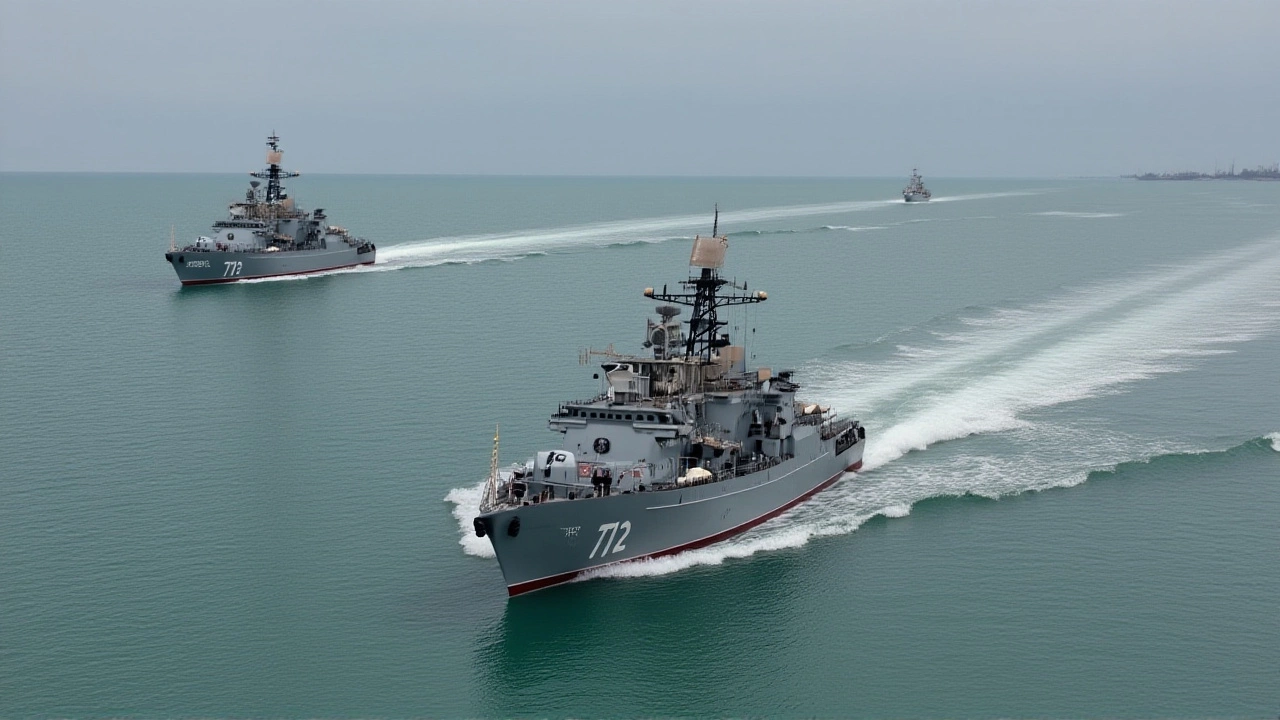On November 23, 2025, the Royal Navy confirmed it had been shadowing two Russian naval vessels in the English Channel while simultaneously monitoring the Yantar — a Russian intelligence-gathering ship — operating just north of Scotland. The timing is no coincidence. This flurry of activity comes as Russian naval presence near UK waters has surged 30% over the past two years, and the Yantar has now breached British territorial limits twice in 2025 alone. What makes this different isn’t just the frequency — it’s the targeting. RAF pilots flying P-8 Poseidon surveillance planes say they were deliberately dazzled by laser systems mounted on the Yantar, an act Defence Secretary John Healey called "reckless and dangerous" — and not just because it endangered lives, but because it signaled intent.
What the Yantar Is Really Doing
The Yantar isn’t just any spy ship. Built for deep-sea surveillance, it carries advanced sonar arrays, submersible drones, and cable-mapping equipment. Its mission? To chart the location, depth, and condition of undersea communication cables that carry 99% of global internet traffic — including critical links between the UK, Europe, and North America. The Ministry of Defence believes Russia is preparing for a future scenario where cutting these cables could cripple Britain’s military command, financial systems, and emergency services. That’s not paranoia. It’s doctrine. Russian military manuals have long referenced "hybrid warfare" tactics that include disabling undersea infrastructure. And now, the Yantar is doing exactly that — mapping the very arteries of modern Britain.
Corvettes, Tankers, and NATO’s Watchful Eyes
While the Yantar hovered near Scotland, two other Russian vessels — the RFN Stoikiy, a Steregushchiy-class corvette, and the tanker Yelnya — were spotted transiting the English Channel on November 15. The Royal Navy dispatched the patrol ship HMS Severn to intercept, following them for over 12 hours before handing off to an unidentified NATO ally near Brittany. Why the handoff? To avoid escalating tensions while maintaining pressure. The RFN Stoikiy is a modern, fast-attack vessel capable of launching anti-ship missiles. Its presence in the Channel — a busy commercial and military corridor — is a calculated signal. Russia isn’t just watching. It’s testing boundaries.
Lasers, Lies, and Diplomatic Sparring
On November 20, John Healey stood before reporters and delivered a rare, blunt warning: "As I speak, a Russian spy ship, the Yantar, is on the edge of UK waters... We deployed a Royal Navy frigate and RAF P-8 planes to monitor and track this vessel’s every move — during which the Yantar directed lasers at our pilots." He added: "My message to Russia and to Putin is this. We see you. We know what you’re doing. And if the Yantar travels south this week, we are ready." The Russian Embassy in London responded with a statement accusing Britain of "whipping up militaristic hysteria" and denying any laser targeting. But radar logs and pilot testimony contradict that. One RAF crew member, speaking anonymously, told a source: "It wasn’t a glitch. It was deliberate. One pulse, then another — right on the cockpit. We had to break off the pass. That’s not navigation. That’s intimidation."
The Bigger Picture: NATO’s Atlantic Shield
The UK isn’t acting alone. In a coordinated move, three Poseidon maritime surveillance aircraft were deployed to Iceland as part of a broader NATO initiative to patrol the North Atlantic and Arctic. These planes, capable of detecting submarines from 100 miles away, are now part of a permanent surveillance loop stretching from the Faroe Islands to Greenland. The goal? To track Russian submarines — especially the new Yasen-M class — that could launch cruise missiles or deploy special forces near NATO’s undersea infrastructure. The Royal Navy has also increased patrols around the Faroe-Shetland Channel, a known transit route for Russian subs heading to the Atlantic. This isn’t just about one ship. It’s about a new Cold War rhythm — one where every movement is monitored, every signal is interpreted, and every laser pulse is recorded as an act of aggression.

Money, Military, and the Budget Crunch
Prime Minister Keir Starmer has pledged billions in new defense spending to counter threats from Russia, China, and Iran. But here’s the catch: the UK government is staring down a multi-billion-pound fiscal shortfall. According to Defense News, officials are weighing tax hikes and deep cuts to public services to fund these commitments. The Ministry of Defence is already asking for an extra £2.3 billion in the upcoming budget, set for release on November 30. Without it, the Royal Navy may be forced to delay the commissioning of its next-generation Type 32 frigates — just as Russian activity is accelerating. "We can’t afford to be slow," said a senior defence analyst at Chatham House. "The Yantar isn’t just a ship. It’s a warning shot. And if we don’t respond with both capability and clarity, we risk being outmaneuvered — not on the battlefield, but in the silence beneath the waves."
What Comes Next?
Intelligence sources suggest the Yantar may attempt to move south toward the North Sea this week, potentially approaching the vital offshore wind farms and gas platforms that power the UK’s energy grid. The Royal Navy has reportedly activated contingency plans to escort civilian vessels through high-risk zones and may deploy additional P-8s from RAF Lossiemouth. Meanwhile, NATO allies are being briefed on the possibility of coordinated electronic warfare responses if the Yantar repeats its laser attacks. The message from London is clear: we won’t be provoked into war — but we won’t be intimidated either.
Frequently Asked Questions
Why is the Yantar ship so concerning to the UK?
The Yantar is equipped with advanced submersibles and sonar systems designed to map undersea communication cables — the same cables that carry global internet traffic and military data. The UK believes Russia is gathering intelligence to potentially cut or sabotage these cables during a crisis, which could cripple banking, emergency services, and defense networks. This isn’t espionage — it’s infrastructure targeting.
What does laser targeting of RAF planes mean?
Laser targeting isn’t just harassment — it’s a violation of international aviation safety protocols and can cause permanent eye damage to pilots. The RAF confirmed the lasers were deliberate, repeated, and aimed at cockpit windows during surveillance flights. This tactic, previously used by Russia near the Baltic Sea, is now being deployed in UK waters, signaling a dangerous escalation in how Russia conducts intelligence operations — and how far it’s willing to push.
Is this part of a broader Russian strategy?
Yes. Since 2022, Russia has increased naval activity near NATO waters by over 40%, with a focus on the North Atlantic, Arctic, and Baltic. The Yantar’s deployments, combined with submarine patrols near UK oil platforms and the use of civilian vessels as cover, reflect a hybrid strategy: low-profile, high-impact operations that avoid direct conflict but erode security over time.
Why is the UK deploying Poseidon planes to Iceland?
Iceland sits at a critical chokepoint between the North Atlantic and Arctic. Russian submarines frequently transit through the GIUK Gap (Greenland-Iceland-UK) to reach open ocean. Deploying Poseidon aircraft there allows NATO to detect and track subs before they can threaten UK or European shores — turning Iceland into an early-warning outpost in a new undersea arms race.
How is the UK’s budget crisis affecting its response?
Despite Prime Minister Keir Starmer’s pledge to boost defense spending, the government faces a £12 billion shortfall. The Ministry of Defence is seeking £2.3 billion more to maintain current patrols and fund new frigates. If denied, the Royal Navy may have to reduce its presence in the North Atlantic, leaving undersea cables and offshore infrastructure more vulnerable — exactly what Russia hopes for.
What happens if the Yantar moves south?
The UK has warned it will respond with "military options ready." That could mean deploying a frigate to shadow it continuously, activating electronic jamming to disrupt its sensors, or even coordinating with NATO allies to isolate the vessel diplomatically. Any further incursion into the North Sea or near offshore energy facilities would likely trigger an emergency Cabinet meeting and potentially trigger Article 5 consultations with NATO partners.





